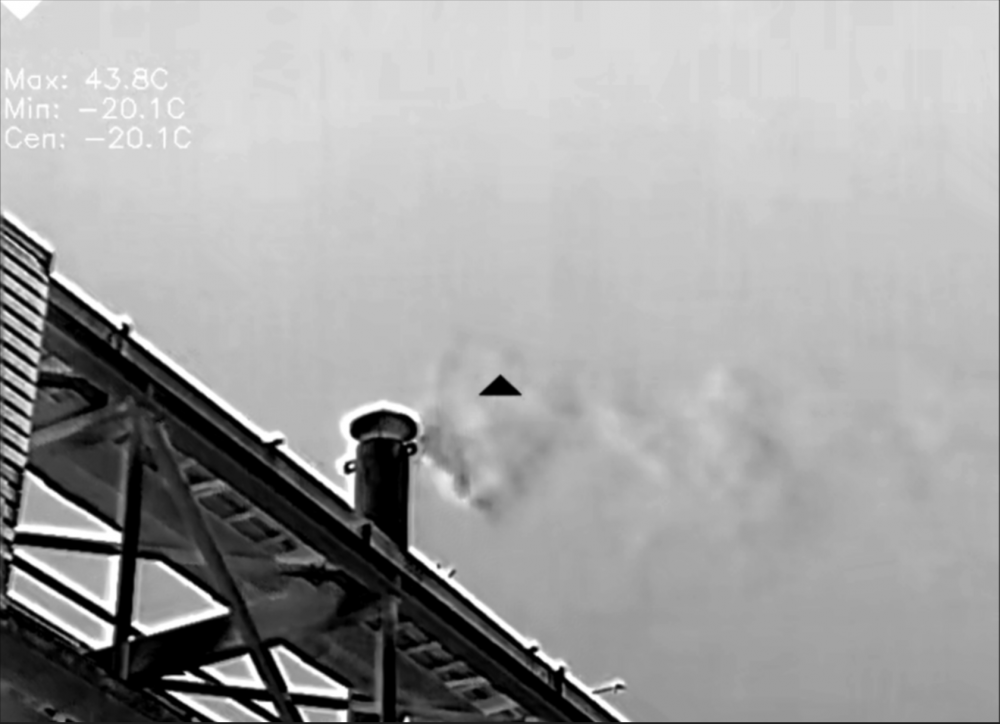Home > Company News > Advantages and Underlying Principles of Optical Gas Imaging Camera
Company News

With the continuous development of industrialization, flammable, explosive, and toxic gases have become ubiquitous in various aspects of our lives, either as products, raw materials, or by-products of industrial production. Once leaked, these gases not only pollute the environment but also pose a significant threat to human life and property, potentially causing poisoning, fires, and even explosions.
To mitigate these risks, it is imperative to develop a rapid, accurate, and safe detection method for remotely determining the location and scale of gas leaks.
Limitations of Traditional Gas Detection MethodsTraditional gas leak detection methods, such as bubble testing, funnel testing, or gas detectors, often suffer from the following shortcomings:
Intrusive detection requires production lines to be shut down, leading to downtime and potential damage to equipment.
Limited detection range necessitates proximity to potentially hazardous areas, posing safety risks to operators.
Due to the limited range of gases each device can detect, multiple detectors are necessary to ensure a wider detection spectrum.
Equipment is often bulky and unable to provide on-site results, hindering environmental inspections and timely leak repairs.
Measurement results are often abstract and data-intensive, making analysis difficult.
Small coverage areas require point-by-point or line-by-line inspections, consuming significant time and resources, and increasing the risk of undetected leaks in blind spots.
2. Safety and Efficiency
Optical gas imaging cameras enable non-contact, long-range, and large-scale detection of target areas. Infrared gas imaging cameras enable inspectors to pinpoint gas leaks precisely without entering hazardous zones, ensuring safe and efficient leak detection.
- 3. Continuous Operation of the Equipment Is Possible
Unlike traditional methods that require intrusive inspections and often cause equipment downtime, optical gas imaging cameras offer a non-contact solution, allowing for inspections without interrupting operations. This allows for continuous monitoring and detection of gas leaks, reducing production losses.
- How Does Optical Gas Imaging Work?
- The Basics: Gas Infrared Absorption Spectroscopy
- The Specific Principle of Absorption Characteristics and Wavelength Range
Absorption at Specific Wavelengths: Different gas molecules possess unique vibrational and rotational modes, corresponding to specific energy levels. When infrared radiation interacts with gas molecules, absorption only occurs when the energy of a photon precisely matches the energy difference between two energy levels of the molecule. Therefore, gas absorption of infrared radiation is selective and occurs only within specific wavelength ranges.
Quantized Energy Levels: Vibrational energy levels of molecules are quantized, meaning they can only exist at discrete energy levels. A molecule can only absorb an infrared photon and transition to a higher vibrational state when the photonâs energy precisely matches the energy difference between two quantized energy levels.
- Precondition for Gas to Absorb Infrared Radiation
Energy Match: As stated in the text, the energy of an infrared photon must precisely match the energy difference between two energy levels of a molecule for absorption to occur. This ensures that the molecule can only absorb specific energies, meaning the gas will only absorb infrared radiation at specific wavelengths.
Dipole Moment Change: The absorption process also requires that the vibrational transition of a molecule must be accompanied by a change in its instantaneous dipole moment. This change in dipole moment gives rise to absorption peaks, which is both a necessary and sufficient condition for the generation of infrared absorption spectra.
| Examples of Gases Detectable at Different Wavelengths | |
| Wavelengths | Detectable Gas Types |
| 7-14μm | CHâ, CâHâ, SOâ, NâO |
| 8.0-8.6μm | Refrigerant Gas |
| 10.3-10.8μm | SFâ, NHâ, CâHâ |
| 3.2-3.4μm | VOCs |
| 4.2-4.4μm | COâ |
| 4.5-4.7μm | CO |



